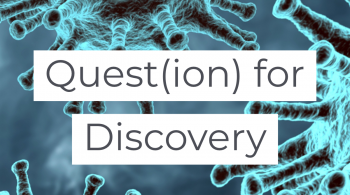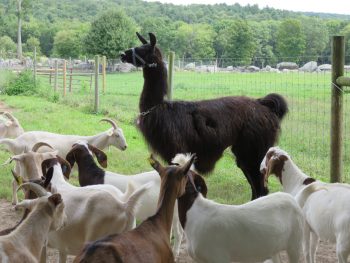 More than 50 research studies to understand, detect, treat and prevent the coronavirus in children and families have launched at Seattle Children’s since the virus emerged in late 2019. The following post is part of the “Quest(ion) for Discovery” series highlighting this research in progress and the search for answers that could result in major scientific breakthroughs that save lives and slow the spread of the virus.
More than 50 research studies to understand, detect, treat and prevent the coronavirus in children and families have launched at Seattle Children’s since the virus emerged in late 2019. The following post is part of the “Quest(ion) for Discovery” series highlighting this research in progress and the search for answers that could result in major scientific breakthroughs that save lives and slow the spread of the virus.
At Seattle Children’s Research Institute, Dr. John Aitchison co-leads the Center for Global Infectious Disease Research, the largest pediatric infectious disease research group in the U.S.
Aitchison’s lab and a team of scientists from Rockefeller University are researching how nanobodies produced by a llama’s immune system can be used to develop a therapy that eliminates COVID-19 in humans. Here he answers the question: Do llama nanobodies hold the secret to fighting COVID-19 in humans?
Aitchison: Unlike humans, the immune systems of llamas and other members of the camelid family produce single chain antibodies when they encounter pathogens like the coronavirus. A very small fragment of DNA from these antibodies is cloned to produce nanobodies.

The nanobodies we derive from llama serum, a liquid in the blood, offer important advantages over monoclonal antibodies, another antibody-based therapy thought to have the ability to treat COVID-19. Advantages include lower manufacturing cost, ease of engineering, smaller size and higher stability, which make them excellent candidates for next-generation therapeutics and diagnostics. Importantly, unlike monoclonal antibodies, nanobodies are extremely durable and stable, and can withstand nebulization for inhaled delivery directly to the lungs.
Our research study starts by immunizing the llama with the spike protein from the coronavirus. The llama’s immune system then produces nanobodies to the virus without ever being infected by the virus itself. Once isolated from the llama’s nanobody-rich blood, the nanobodies are cloned into bacteria, which are used as nanobody factories. Our team at Seattle Children’s will choose the most promising nanobodies through a series of tests, with the hope that these nanobodies could be used to rapidly neutralize the virus in an infected person and block the infection from spreading.
Currently, our teams are seeing great success reproducing nanobodies from a New York-based llama named Marley.
We also hope to use llama nanobodies to develop an easy-to-use, inexpensive, and simple to mass-produce diagnostic test for use in low-resource settings all over the world. Similar to a pregnancy test, this diagnostic would feature a highly sensitive test strip capable of detecting the coronavirus in a small saliva sample. We expect such a test could return results in a matter of minutes and achieve the same 98% accuracy rate seen in professional lab testing of COVID-19 samples, but without the need for expensive equipment or dedicated laboratory resources.
The beauty of nanobodies is their versatility. Though the llamas and their relatives deserve most of the credit, scientists are only beginning to realize the endless possibilities of nanobodies. Our research will not only help develop nanobody diagnostics and treatments for COVID-19, but will make it so that we can apply what we learn about nanobodies today to quickly respond to the global pandemics of the future.
Make a donation to Seattle Children’s to advance promising research efforts surrounding COVID-19 – so our findings can best serve our patients, their families, our community and the world.

